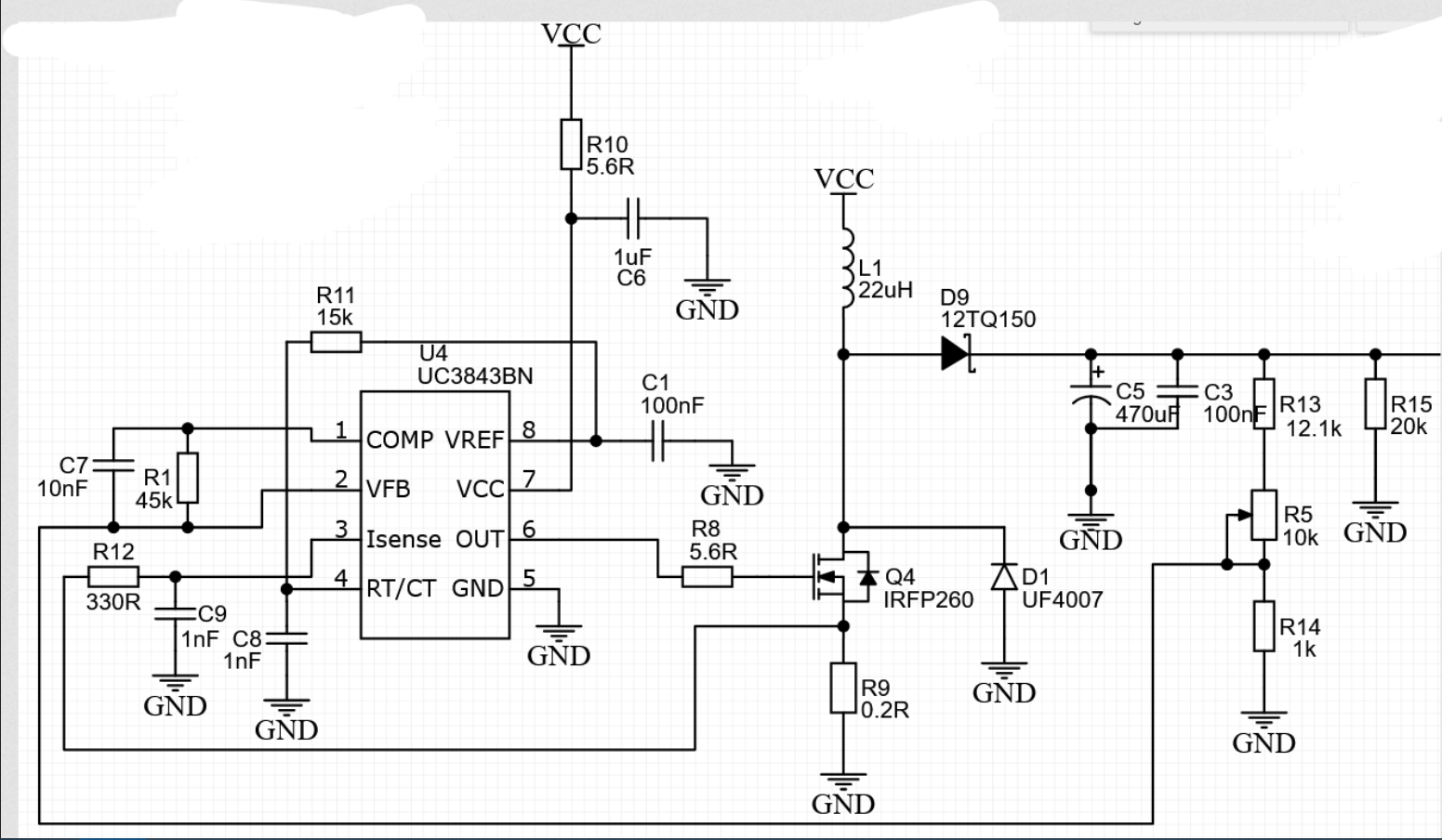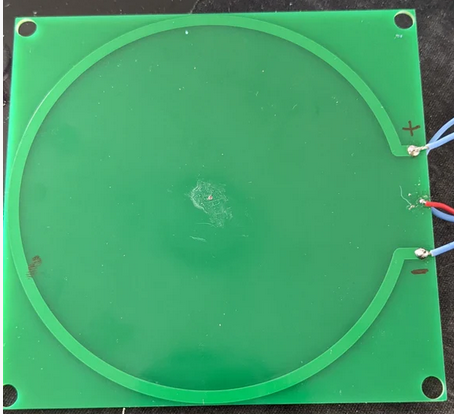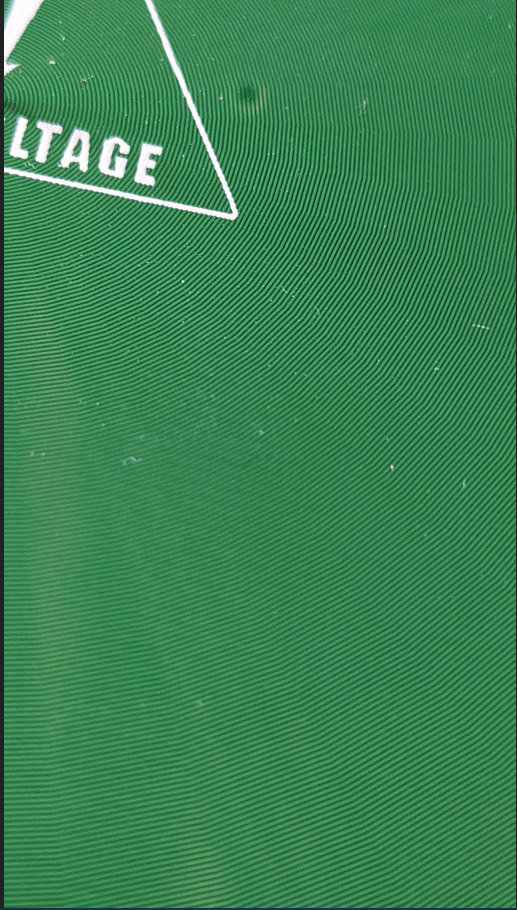-
1SCHEMATIC
![]()
Don't worry I'll explain how this all works in steps.
-
2THE BOOST CONVERTER
![]()
![]()
Since I wanted to power this thing with a 12v supply and still get pretty big arcs, I have to boost the 12v to a higher voltage, and this circuit achieves that. The uc3843 is a pwm controller which sends a square wave to mosfet Q4, this square wave doesn't have a fixed duty cycle because that determines the output power, the higher the duty cycle the higher the voltage and vice versa. The uc3843 controls the voltage by comparing it to a reference voltage which is set at 2.5v, so all I have to do is put a voltage divider on the output which is set to output 2.5v and feed it back to the feedback pin of the uc3843.
I used R5 to get a variable voltage on the output, which gives me a voltage range of 33V - 65V. R11 and C8 set the output frequency which is 116 KHz. R9 is the current sense resistor, R12 and C9 is a low pass filter which filters any spikes on the current sense resistor. The current sense resistor is set at 0.2 ohm since I didn't want more than 5 amps to be drawn from my supply. The uc3843 achieves this by comparing the output of R9 with a 1v reference signal, so according to ohms law(V/I = R) => 1V/5A = 0.2 ohms. R10 and C6 is a soft start circuit, this is because I cant have the converter shoot to a super high voltage, due to inrush currents. It works by charging the capacitor through the resistor, which takes time, which prevents inrush current. D1 is used as a flyback diode in order to protect the mosfet from inductive spiking. C7 and R1 are the compensation components, which helps keep the output of the boost converter stable, calculating these two values can be tough so I just kept a constant capacitance of 10nF and varied the resistance until I got a suitable output.
If you want more details on how to calculate the oscillator frequency, current sense resistor, output voltage, compensation network and just have a better understanding of how the uc3843 works then visit the datasheet (link).
-
3THE DRIVER
![]()
Now, this part of the circuit just drives the mosfet Q3 at the resonant frequency of the secondary coil. Initially the mosfet will turn on and let current flow through the primary of the tesla coil which creates a magnetic feild and causes magnetic flux to flow through the secondary coil which creates a bigger magnetic feild, and this magnetic feild oscillates at the resonant frequency of the coil this resonant frequency is fed to the 74HC14N, which is just a not gate. The reason for the not gate is to convert the sine wave of the resonant frequency to a square wave to drive the mosfet, and there is 2 not gates because I didnt want the signal to be 180 degrees out of phase.
D4 and D3 clamp the sine wave to 5v. D6 is to give the fet a faster turn off signal. D10 is used to protective the fets gate from high voltage transients, which happens alot since we are working with a device thats sole purpose is to emit high frequency high voltage arcs.
The UCC37322 is a gate driver, which helps drive the gate of the mosfet, this is important since we need a good gate signal in order to have less losses and better performance. Pin 2 is the input signal of the gate driver which is fed to the resonant sqaure wave. Pin 3 is the enable pin, which is pulled high through an internal resistor, this enable pin can turn the UCC37322 on and off (on when pulled high or left floating and off when pulled to ground). This pin is connected to the interrupter part of the circuit which controls whether the UCC37322 is on/off.
-
4THE INTERRUPTER
![]()
This is quite easy and all over the web, its a simple 555 timer circuit with variable duty cycle. R6 controls the off-time and R4 controls the on-time of the square wave, this is then fed to pin 3 of the UCC37322, the reason for this interrupter is too not have constant power flow through the primary, since this only creates bushy hot arcs, while I wanted little lighting bolts. The frequency range of the timer is set by C15.
-
5THE MUSICAL PART
![]()
![]()
Now this is the most interesting part of the whole build and the hardest part for me to get working. So in order to hear voices from the sparks I have to run it at constant wave mode which just means the mosfet is on a lot of the time, which translates to more heat, so on "music mode" it takes 10 minutes for the mosfet to reach 70 degrees Celsius, which isn't that bad,but who's gonna listen to music on this thing for 10 minutes straight. The way this circuit works is pretty simple, it pretty much works like how a class d amp works, first I take the music signal from the Bluetooth module which has pins (L,G and R which means left,right and ground), I then amplify this signal with the lm358 and its gain is set by R18, I then compare this signal to a triangle wave. R19 is used to set the offset of the audio since the triangle wave swings from 1/3 VCC to 2/3 VCC. The comparator converts my amplified sine wave into a square wave with the duty cycle being modulated by the frequency of the amplified signal, I got this idea from Great Scott, here's the video. This modulated square wave then goes to pin 3 of the UCC37322 which turns the driver on and off with respect to the music frequency. I drew a quick diagram to help visualize the things I'm talking about.
-
6THE TESLA COIL
![]()
![]()
![]()
This is the tesla coil, as you can see the secondary coil or top side of the PCB is a single 0.15mm trace wound in a circle and has a total of 240 turns. The bottom side of the PCB is a single 3.5mm trace. Now the biggest problem with this design is that this coil has a very high Q factor, which just means the primary and secondary are coupled too close together this limits the arc sizes pretty significantly, the reason I didn't separate it, is because I didn't want to pay for an extra PCB, but if you want better results than me, then you should separate them.
-
7THE PCB
![]()
I got my pcb's from JLCPCB. I don't think I should share my design for it because I've made some errors that I had to correct during the trouble shooting phase, like two of the components wouldn't fit, the placement of the regulator was wrong, which gave it a lot of voltage spikes, which killed my bluetooth module tons of times until I finally gave the bluetooth module its own regulator. I'll probably fix the design and post it on here, but I encourage you to create your own design, I used easyeda.
-
8SPARK MODE IN ACTION!
-
9MUSIC MODE IN ACTION!
BLUETOOTH MUSICAL PCB TESLA COIL
A bluetooth musical tesla coil, but fully on a pcb, NO COILS, and also only powered by one 12v supply.
 HIGHVOLTOMANIAC
HIGHVOLTOMANIAC










Discussions
Become a Hackaday.io Member
Create an account to leave a comment. Already have an account? Log In.